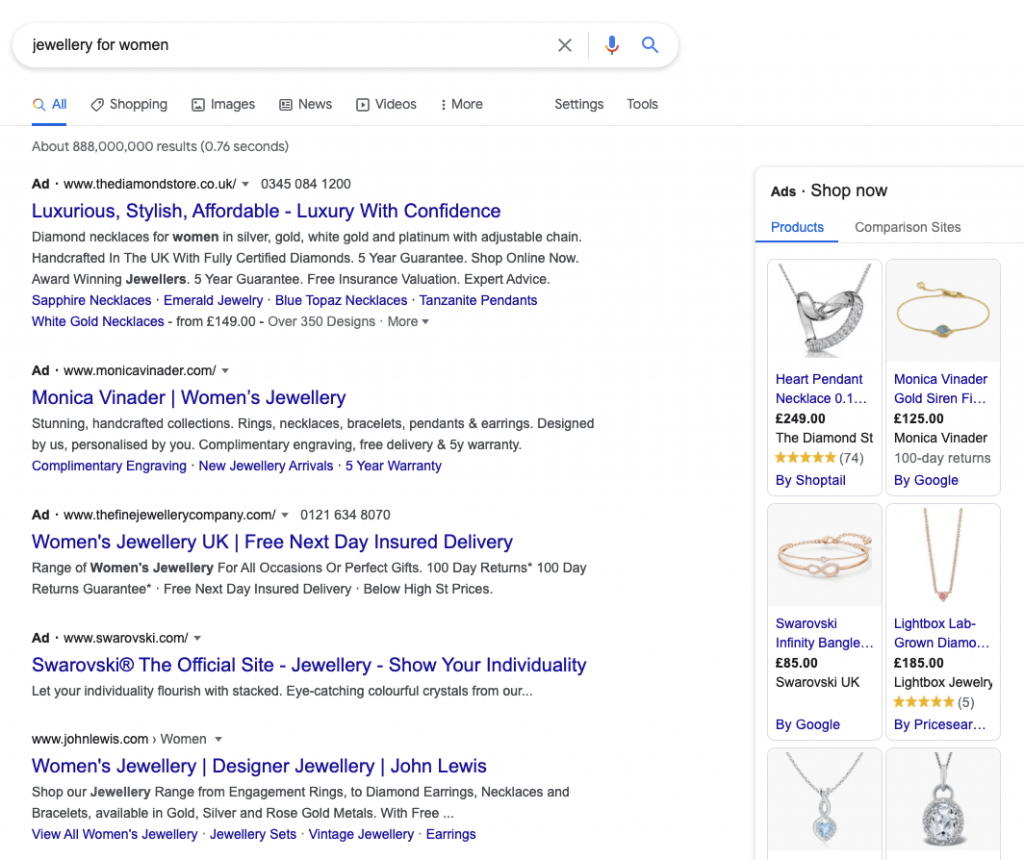How to start an online business?
Starting a successful online business comes with many challenges. But with 8 out of 10 businesses failing within the first 18 months – how can you make sure that your new business will be a success?
In this blog we’ll be looking at the basics to getting started online, what to look out for, considerations as well as introducing you to the world of ecommerce.
Business ideas

Before you jump into anything, the first thing you should do is come up with a business idea for your online business. The best business ideas are those that fill a gap and need within the market. Supply a solution to a problem for a demographic of people.
If you’re stuck for an idea, here are 7 ecommerce business ideas that you can start from anywhere.
Once you have settled on an idea, you will then need to research the market you’re looking to enter. This will include competitor research, market research and analysing your target market all before you do anything else.
This research phase is probably the most important part of your journey to selling online. It will inform you of where there are opportunities within your market that you can take advantage of above your competitors.
Find your suppliers or manufacturers
Your next step is to find suppliers and or manufacturers for your products. It’s important to research suppliers and manufacturers thoroughly before making any large purchases.
Finding a supplier
When we talk about a supplier, we’re meaning a business that can supply you with a finished product that can be bought in bulk. When it comes to finding a supplier of a product, there is lots of advice and suggestions on the internet. You should do some research and find out which suppliers offer the product or products you’re looking for. As well as getting as much information on how they prefer to bill, their delivery times and more.
Once you have all the information you need to make an informed decision about which supplier you’re going to use; you can ask them to send you samples of your potential products. This is so you can see and feel the quality and materials in real life.
Finding a manufacturer

Similarly when it comes to finding a manufacturer, we’re talking about a business that can take a product concept and manufacture it into reality. The research side to this is quite similar to finding a supplier but the discussions and prototypes of your product will take longer.
Remember when it comes to manufacturing your own product, you need to look into patent and copyright laws to ensure that your design for your product is protected.
DIY
Or another option is to create the product yourself. A lot of businesses start out this way and it can help eliminate costs by getting a supplier or manufacturer involved for instance. Sourcing materials at cost and creating the product yourself can also help reduce shipping costs, damage risk and can help with your marketing efforts later down the line.
Handmade products in their own right have an advantage over mass produced products. You can firstly charge a little more for your handmade items and they are going to be very unique. In recent times, people are far more likely to shop from a small independent business, particularly if it’s sustainable.
So whichever way you decide to source your products, do some thorough research before selecting your supplier of choice.
Getting set up online

Once you have secured your supplies and stock, the next step is to look at getting an ecommerce shop set up. There are a few different ways you can go about this – your own online shop or via a marketplace platform.
Marketplace
Marketplaces are platforms such as Etsy, Ebay and Amazon. Whilst they may be good options for those who are just starting out, as they drive traffic to your shop pretty much straight away and you can make sales pretty quickly.
However, marketplaces also have a pretty hefty downfall to them too. They make their money through things like listing fees, transaction fees, VAT fees etc. These can quickly add up and end up eating into your profit margin.
Top Tip: The average Etsy seller loses 20% of their profit every time they make a sale
So if you don’t like the idea of handing over up to 20% of your profits, what can you do?
The best way to avoid this is by increasing your prices to account for these fees or setup your own online shop.
Your own online shop
You may think that having your own online shop will end up costing you an arm and a leg before you’ve even made your first sale but it doesn’t have to be this way.
Having your own online shop also comes with many benefits. From being able to be fully in control of your shop, how it looks, what products are listed etc, to being able to build a loyal returning customer base using marketing and advertising.
There are a lot of options out there to help you set up your own successful online business. At EKM, we specialise in doing just that.
Get ready for selling

Before launching your brand new business, it may seem simple but you’ll want to ensure that you have a finished website and product to sell before launch. The worst thing for a new customer to see is an unfinished and unpolished site. It will probably give them a bad impression of your new business and they’ll likely not buy from you.
You’ll want to ensure that all your products are uploaded to your site and that they all have a good solid description of each item. Your product descriptions are arguably the most important part of your website; they tell the customer exactly what they need to know including the finer details that may make or break a sale.
You’ll want to avoid using duplicate descriptions as Google will mark down your product on the SERP (Search Engine Results Page) rankings. This also allows you to put your own branding and tone of voice in the description rather than the manufacturers standard description. We also have this handy guide for you to read if you’d like more information on product descriptions and how to make the most out of them.
You’ll also want to ensure that your product images are not only high quality but there are multiple views and colour variations for visitors to view. The images you receive from your supplier or manufacturer might not be the best quality and it’s strongly recommended that you take your own high-quality product images.
This will allow you to stand out from your competitors who may be using the same images provided by the supplier or manufacturer. Having good product images can help increase your chances of a sale dramatically. You may already have some images provided to you by the manufacturer or supplier but if you’d like to take your own images there are a few tips to help you get the perfect product image in our product image guide here.
Set up social media accounts
One of the most important tools for new businesses to utilise is social media. There are many reasons why social media is an important tool to use.
Your social media accounts will work alongside your online shop and provide other platforms and different types of content for customers and potential customers to interact with you on. Social media can also indirectly help your shop’s Google rankings. Helping you to increase the amount of organic traffic being sent to your shop and helping you to climb the Google SERP (Search Engine Results Page) rankings.
Social media can open up your new business to new audiences and can also be used to retarget customers or people that have visited your site, in order to encourage a sale. There are nearly endless opportunities when it comes to utilising social media and for most, it can also be seen as a trust factor during the consideration phase.
Market your business
Marketing is a strong tool that you can use to create some brand awareness, generate traffic to your site and help to increase sales. Marketing comes in many forms and deciding what works best for your business can depend on a few things.
Paid advertising
If you’re willing to spend a little, you could look into Facebook Ads to help market your new business. Facebook Ads are a great way to start out with advertising. Not only can you retarget website visitors with products they’ve looked at before, on their social media feed’ but you can also create lookalike audiences to expand your reach, create brand awareness and much more.
One other method of paid advertising that works really well for ecommerce businesses is Google Shopping. Google Shopping allows you to place your products at the top of potential customers search results. While there is a cost to all of this, it’s the quickest and most effective way to bring customers to your online shop – particularly if it’s new.

Alternatively, we have a team of in-house experts that can help you get set up and manage your accounts for you. We’ve found that this can really help our customers get their business off the ground and create a name for themselves. Learn more about our Google Shopping service here.
Content marketing
There are also more traditional forms of marketing such as printed advertisements too, but these are hard to track your return on investment. A much better and proven way to generate traffic to your online shop is content marketing.
Using your online business blog to create content around a specific topic that you want to be seen as an authority on – otherwise known as a cluster content strategy – can help boost your SEO, increase traffic to your site and build brand awareness. Whilst this is a more long-term strategy it can yield great results but make sure to do your research on your targeted keywords first.
Track your business’ KPIs

No matter what form of marketing you choose to do, one of the top reasons why small businesses fail within the first 18 months is not keeping an eye on their analytical data and performance.
Using tools like Google Analytics on your site will help you gain a deeper understanding as to where your visitors are coming from, what they’re doing on your site and what product/page is most popular.
Even this top-level information can help you refine your business activities, for example, perhaps you found that most of your site traffic was coming from Facebook you can increase the number of times you post in a day and perhaps up your advertising spend if the return on investment is proving to be good.
Working to the advice in this blog, you should have a solid understanding and foundation to set up a successful online business of your own.
If you’d like to learn more about setting up your own online shop, read on for more insights into running your own online business here.







